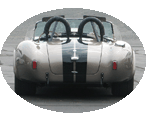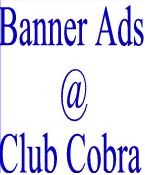 
 Main Menu
Main Menu
|
 Nevada Classics
Nevada Classics
|
 Advertise at CC
Advertise at CC
|
 February 2025
February 2025
|
| S |
M |
T |
W |
T |
F |
S |
| |
|
|
|
|
|
1 |
| 2 |
3 |
4 |
5 |
6 |
7 |
8 |
| 9 |
10 |
11 |
12 |
13 |
14 |
15 |
| 16 |
17 |
18 |
19 |
20 |
21 |
22 |
| 23 |
24 |
25 |
26 |
27 |
28 |
|
|
 CC Advertisers
CC Advertisers
|
|
 1Likes 1Likes
-
 1
Post By DanEC
1
Post By DanEC

03-10-2015, 04:31 PM
|
 |
CC Member

|
|
|
Join Date: Aug 2009
Location: Adelaide,
SA
Cobra Make, Engine: AP 289FIA 'English' spec.
Posts: 13,152
|
|

 Not Ranked
Not Ranked
 Dialing-in a scattershield
Dialing-in a scattershield
I've often seen mention on this forum of "dialing in" a scattershield. Also seen mention that Lakewoods are not as good (ie accurate) as QuickTime scattershields, and that it might take an hour of clocking and adjustment to achieve the correct alignment.
Some questions:
What is the procedure for "dialing in" a scattershield? What is adjustable?
What does the QT have over the Lakewood design that is better? I think I read that they both come out of the same factory, so that begs the question of what is different, and is there anything about the Lakewood that is better?
I'm assuming that the flywheel (any/all flywheels?) aligns well enough axially at assembly to the crank that it doesn't need clocking up as well?
What about the clutch pressure plate? Any action needed there?
If the scattershield needs dialing in, does the gearbox need dialing in as well to ensure axial alignment with the crank centreline?
Cheers,
Glen
|
-
Advertising


03-10-2015, 05:04 PM
|
 |
Half-Ass Member

|
|
|
Join Date: Jun 2005
Cobra Make, Engine: ERA #732, 428FE (447 CID), TKO600, Solid Flat Tappet Cam, Tons of Aluminum
Posts: 22,017
|
|

 Not Ranked
Not Ranked
There is a wonderful thread on this forum by one of the Kirkham brothers who takes you through each step of aligning a QT bellhousing with very nice pictures and explanations. There is a small bit of math involved, but not much. Basically, you just put your run-out gauge in the middle of the BH and adjust the two dowels so it's perfectly centered (that's the simple, one sentence answer  ). My Lakewood took quite a while to do, and it was on an engine stand. Obviously it's harder to do when the engine is in the car. Do a quick search and you'll find the Kirkham thread. It might have been contained in the big thread on the million dollar Cobra they built for Larry E., but maybe not. |

03-10-2015, 05:13 PM
|
 |
CC Member

|
|
|
Join Date: Apr 2009
Location: Little Rock area,
AR
Cobra Make, Engine: ERA Street Roadster #782 with 459 cu in FE KC engine, toploader, 3.31
Posts: 4,527
|
|

 Not Ranked
Not Ranked

I think it's a good idea while at it, to measure the flywheel for run-out (deviation from flatness). I've heard some disagreement that it isn't worth while because the crank flange could be part of it but in my case anyway, it has identified a warped flywheel.
Lakewood BHs do have a reputation for being kind of sloppy and Quicktime have a reputation for being pretty concentric - mine was well within tolerance out of the box. I believe Lakewood bought Quicktime (could be the other way) but they have not been jointly held very long.
You need a dial indicator and magnetic base to check the bellhousing. After the flywheel and bellhousing are bolted in place, the dial indicator needs to be set up in the center of the transmission register with the pin riding on the edge of the opening. Mark the bellhousing at 90 deg intervals and rotate the engine to where the indicator lines up on the first mark - record the dial reading (don't need to zero the DI) - then rotate the engine to the next mark - record the reading - etc. for all 4. I like to run everything at least twice to make sure I'm getting consistent readings.
Assuming all 4 dial indicator readings are on the same side of zero (0), take the difference of the largest and the smallest reading and divide by 2 and that represents how out the center of the bellhousing register is in relation to the crank centerline. It can be calculated in both axis but the one with the greatest figure is the one to be concerned with. Hopefully you will be within .006 inches as that is the usually quoted reference standard.
If it's coming up with excessive tolerance then it will require a set of adjustable dowels and some time spent wiggling it in until it's within tolerance. That may take some time. An hour to do the initial check is not unreasonable if you have the engine to where the flywheel and bellhousing can be bolted up.
I don't have a picture of my DI set up but maybe someone has one they can post. Setting up the DI to read on the edge of the bellhousing opening may be the most time-consuming part of the testing.
|

03-10-2015, 05:18 PM
|
|
Senile Club Cobra Member

|
|
|
Join Date: Feb 2001
Location: Buffalo, NY USA,
NY
Cobra Make, Engine: Superformance
Posts: 4,548
|
|

 Not Ranked
Not Ranked
Ford Racing has a "how to" here:
http://www.fordracingparts.com/downl...using_Tech.pdf
Well worth the time. And yes, Quicktimes are more concentric than Lake woods even though they are now owned by Lakewood/Mr. Gasket, et. al. Go figure................
__________________
"I'm high all right, but on the real thing....powerful gasoline and a clean windshield..."
rick@autoventureusa.net
|

03-10-2015, 09:13 PM
|
 |
CC Member

|
|
|
Join Date: Aug 2009
Location: Adelaide,
SA
Cobra Make, Engine: AP 289FIA 'English' spec.
Posts: 13,152
|
|

 Not Ranked
Not Ranked
Thanks for the responses. I had a look at the 'million dollar Cobra' thread, but it ran to around 80 pages and nothing relevant showed up on a search, but I get the idea.
So the clocking process trues up the scattershield alignment, and is an opportunity to check the flywheel for warpage (is yours aluminium, Dan?), and also the squareness of the gearbox mtg. face.
We then need to assume that the gearbox mounting holes on the scattershield are correctly positioned?
Never done this before with a purpose designed scattershield like a QT...so a further question:
Once the QT scattershield is dialled-in and screws torqued up, I should leave it fitted, and then fit the gearbox (Toploader) to the scattershield once the engine (with QT) is installed?
Cheers,
Glen
|

03-11-2015, 05:52 AM
|
 |
Half-Ass Member

|
|
|
Join Date: Jun 2005
Cobra Make, Engine: ERA #732, 428FE (447 CID), TKO600, Solid Flat Tappet Cam, Tons of Aluminum
Posts: 22,017
|
|

 Not Ranked
Not Ranked
Quote:
Originally Posted by xb-60

I had a look at the 'million dollar Cobra' thread, but it ran to around 80 pages and nothing relevant showed up on a search...
|
That's because I was wrong.  It was in the "Kirkham Assembly Manual" thread. Here you go: Kirkham Motorsports Assembly Manual |

03-11-2015, 11:28 AM
|
 |
CC Member

|
|
|
Join Date: Apr 2009
Location: Little Rock area,
AR
Cobra Make, Engine: ERA Street Roadster #782 with 459 cu in FE KC engine, toploader, 3.31
Posts: 4,527
|
|

 Not Ranked
Not Ranked

Quote:
Originally Posted by xb-60

Thanks for the responses. I had a look at the 'million dollar Cobra' thread, but it ran to around 80 pages and nothing relevant showed up on a search, but I get the idea.
So the clocking process trues up the scattershield alignment, and is an opportunity to check the flywheel for warpage (is yours aluminium, Dan?), and also the squareness of the gearbox mtg. face.
We then need to assume that the gearbox mounting holes on the scattershield are correctly positioned?
Never done this before with a purpose designed scattershield like a QT...so a further question:
Once the QT scattershield is dialled-in and screws torqued up, I should leave it fitted, and then fit the gearbox (Toploader) to the scattershield once the engine (with QT) is installed?
Cheers,
Glen
|
Glen - don't worry about the transmission bolt holes for the transmission. The transmission registers by the fit of the input shaft bearing retainer to the opening. That fit should be snug with no play.
My Cobra flywheel is aluminum but the one I had a bad experience with was a new Hays steel flywheel for my Corvette - it was warped out of the box. I had to have it machined twice before I could use it. I would torque the flywheel down and take runout checks around the middle of the clutch disc contact face just to make sure you don't have something really wacky like I did. It's hard to find a spec on this. The only one I have personally found was in my 67 Plymouth GTX shop manual - .005 inch. How that relates to modern transmissions like the Tremic I have no idea. For old Toploaders, Muncies and T-10s with a ball bearing input bearing and a wobbly input shaft, it's probably not real critical. For a modern transmission it might be. Blykins would be a good source to ask this question.
As far as the transmission mating face on the bellhousing - I've not done this but I guess you could bolt the bellhousing on, set up the mag base on the crank flange and the indicator reading on the outer area of the bellhousing face and rotate the crank and record measurements. If the bellhousing is machined poorly it could sure create transmission issues - but I'm not aware this has been an issue for anyone. With my old wobbly input shaft Toploader I didn't feel it was worth checking.
Once you have verified the bellhousing is mounting within tolerance, the dowels should keep it in place even if you remove and replace it. In my experience there may be enough slack at the dowel pins to bump a bellhousing maybe a thousand or so in one direction or the other - but it should go back to where you have it dialed in. Then you can remove it to install the engine if you want or install everything together.
Good luck. |

03-11-2015, 03:31 PM
|
 |
CC Member

|
|
|
Join Date: Aug 2009
Location: Adelaide,
SA
Cobra Make, Engine: AP 289FIA 'English' spec.
Posts: 13,152
|
|

 Not Ranked
Not Ranked
Quote:
Originally Posted by patrickt

....wrong...
 |
Quote:
Originally Posted by patrickt

|
Got it. Read it. Absorbed it.
 |
 Posting Rules
Posting Rules
|
You may not post new threads
You may not post replies
You may not post attachments
You may not edit your posts
HTML code is Off
|
|
|
All times are GMT -7. The time now is 06:21 AM.
|












 1Likes
1Likes




 ). My Lakewood took quite a while to do, and it was on an engine stand. Obviously it's harder to do when the engine is in the car. Do a quick search and you'll find the Kirkham thread. It might have been contained in the big thread on the million dollar Cobra they built for Larry E., but maybe not.
). My Lakewood took quite a while to do, and it was on an engine stand. Obviously it's harder to do when the engine is in the car. Do a quick search and you'll find the Kirkham thread. It might have been contained in the big thread on the million dollar Cobra they built for Larry E., but maybe not.
 It was in the "Kirkham Assembly Manual" thread. Here you go:
It was in the "Kirkham Assembly Manual" thread. Here you go: 
 Linear Mode
Linear Mode



